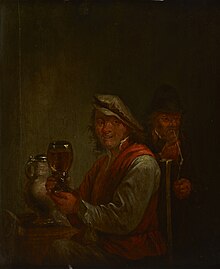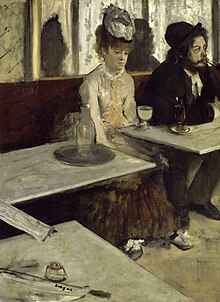 Global Information
Global InformationRecreational drug use information



Recreational drug use is the use of one or more psychoactive drugs to induce an altered state of consciousness, either for pleasure or for some other casual purpose or pastime.[1] When a psychoactive drug enters the user's body, it induces an intoxicating effect.[1] Recreational drugs are commonly divided into three categories: depressants (drugs that induce a feeling of relaxation and calmness), stimulants (drugs that induce a sense of energy and alertness), and hallucinogens (drugs that induce perceptual distortions such as hallucination).[2]
In popular practice, recreational drug use is generally tolerated as a social behaviour,[1] rather than perceived as the medical condition of self-medication.[3] However, drug use and drug addiction are severely stigmatized everywhere in the world.[4][5][6] Many people also use prescribed and controlled depressants such as opioids, opiates, and benzodiazepines.[2] What controlled substances are considered generally unlawful to possess varies by country, but usually includes cannabis, cocaine, opioids, MDMA, amphetamine, methamphetamine, psychedelics, benzodiazepines, and barbiturates. As of 2015,[update] it is estimated that about 5% of people worldwide aged 15 to 65 (158 million to 351 million) had used controlled drugs at least once.[7]
Common recreational drugs include caffeine, commonly found in coffee, tea, soft drinks, and chocolate; alcohol, commonly found in beer, wine, cocktails, and distilled spirits; nicotine, commonly found in tobacco, tobacco-based products, and electronic cigarettes; cannabis and hashish (with legality of possession varying inter/intra-nationally); and the controlled substances listed as controlled drugs in the Single Convention on Narcotic Drugs (1961) and the Convention on Psychotropic Substances (1971) of the United Nations (UN).[8] Since the early 2000s, the European Union (EU) has developed several comprehensive and multidisciplinary strategies as part of its drug policy in order to prevent the diffusion of recreational drug use and abuse among the European population and raise public awareness on the adverse effects of drugs among all member states of the European Union, as well as conjoined efforts with European law enforcement agencies, such as Europol and EMCDDA, in order to counter organized crime and illegal drug trade in Europe.[8][9][10]
- ^ a b c Crocq, Marc-Antoine (December 2007). Thibaut, Florence (ed.). "Historical and cultural aspects of man's relationship with addictive drugs". Dialogues in Clinical Neuroscience. 9 (4). Laboratoires Servier: 355–361. doi:10.31887/DCNS.2007.9.4/macrocq. ISSN 1958-5969. OCLC 62869913. PMC 3202501. PMID 18286796. S2CID 12682928.
- ^ a b Lüscher, C; Ungless, MA (November 2006). Bosurgi, R (ed.). "The Mechanistic Classification of Addictive Drugs". PLOS Medicine. 3 (11). Public Library of Science: e437. doi:10.1371/journal.pmed.0030437. ISSN 1549-1676. LCCN 2004212194. PMC 1635740. PMID 17105338. S2CID 12300815.
- ^ Williams S (24 October 2015). "Specialty Drug Classes That Are Costing Consumers an Arm and a Leg". The Motley Fool.
- ^ Earnshaw, VA (December 2020). "Stigma and substance use disorders: A clinical, research, and advocacy agenda". American Psychologist. 75 (9). American Psychological Association: 1300–1311. doi:10.1037/amp0000744. ISSN 1935-990X. PMC 8168446. PMID 33382299. S2CID 229930928.
- ^ Wang, S.-C.; Maher, B. (December 2019). "Substance Use Disorder, Intravenous Injection, and HIV Infection: A Review". Cell Transplantation. 28 (12). SAGE Journals: 1465–1471. doi:10.1177/0963689719878380. ISSN 1555-3892. PMC 6923556. PMID 31547679. S2CID 202746148.
- ^ Pickard, H (January 2017). "Responsibility without Blame for Addiction". Neuroethics. 10 (1). Springer Verlag: 169–180. doi:10.1007/s12152-016-9295-2. ISSN 1874-5504. PMC 5486507. PMID 28725286. S2CID 13875812.
- ^ Global Overview of Drug Demand and Supply (PDF). World Drug Report 2017. United Nations. 2017. p. 13. ISBN 978-92-1-148291-1. Retrieved 9 June 2018.
- ^ a b Friedrichs, Jörg (2009). "Part II: The International Fight Against Drugs". Fighting Terrorism and Drugs: Europe and International Police Cooperation. Routledge Advances in International Relations and Global Politics (1st ed.). London and New York City: Routledge. pp. 111–158. doi:10.4324/9780203934562. ISBN 9780415543514.
- ^ Directorate-General for Migration and Home Affairs (2023). "Organised crime and human trafficking — Drug policy". home-affairs.ec.europa.eu. City of Brussels: European Commission. Archived from the original on 1 January 2023. Retrieved 20 March 2023.
- ^ "Crime Areas — Drug Trafficking". europol.europa.eu. The Hague: Europol. 2023. Archived from the original on 9 May 2023. Retrieved 12 May 2023.